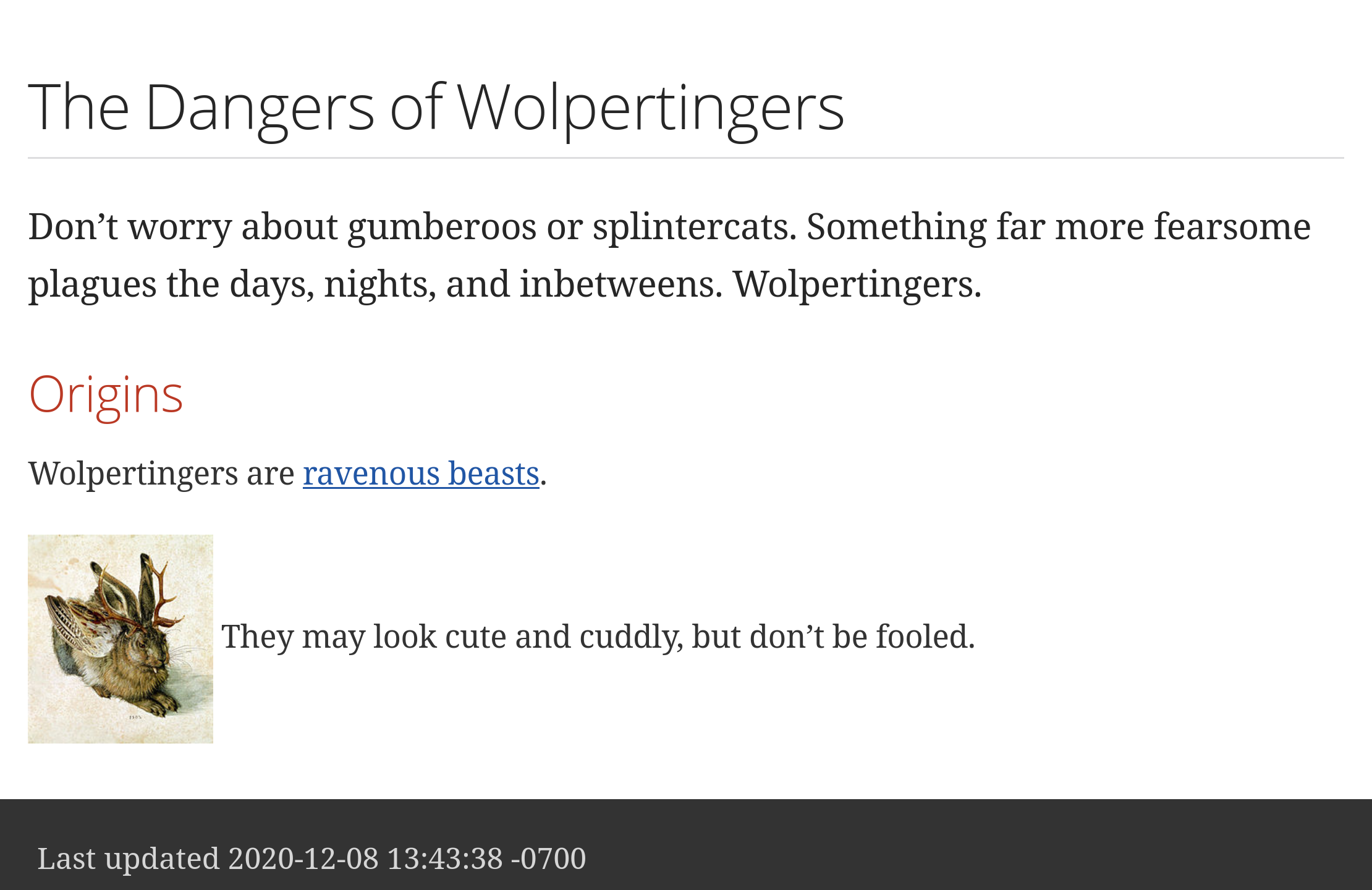Manage Images
Images are not embedded in the HTML output by default. If you have image references in your document, you’ll have to save the image files in the same directory as your converted document.
Embed images with the data-uri attribute
As an alternative, you can embed the images directly into the document by setting the data-uri document attribute.
= The Dangers of Wolpertingers
:url-wolpertinger: https://en.wikipedia.org/wiki/Wolpertinger
:imagesdir: my-images
:data-uri:
Don't worry about gumberoos or splintercats.
Something far more fearsome plagues the days, nights, and inbetweens.
Wolpertingers.
== Origins
Wolpertingers are {url-wolpertinger}[ravenous beasts].
[.left.text-center]
image:wolpertinger.jpg[Wolpertinger,100,,link="https://commons.wikimedia.org/wiki/File:Wolpertinger.jpg"]
They may look cute and cuddly, but don't be fooled.You can also set data-uri using the API or CLI (shown here):
$ asciidoctor -a data-uri my-document.adoc
When you view the HTML file in your browser, you should see the image displayed in the page.

allow-uri-read attribute
If the target of one or more images in the document is a URI, you must also set the allow-uri-read attribute securely and run Asciidoctor in SECURE mode or less.
$ asciidoctor -a data-uri -a allow-uri-read my-document.adoc
The same is true when converting the document to PDF using Asciidoctor PDF, regardless of whether the data-uri attribute is set since this behavior is implicit.